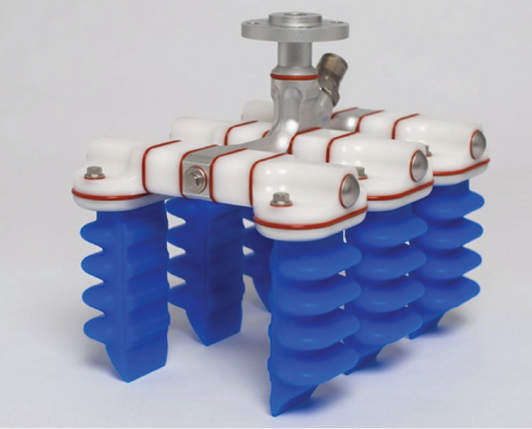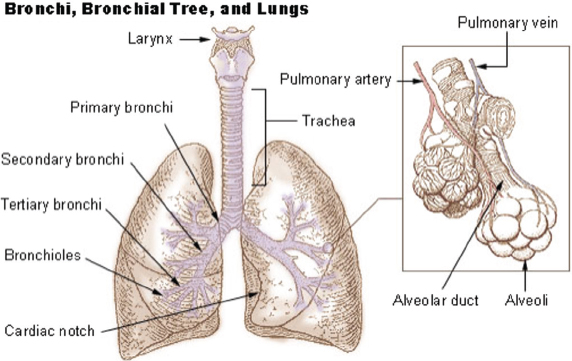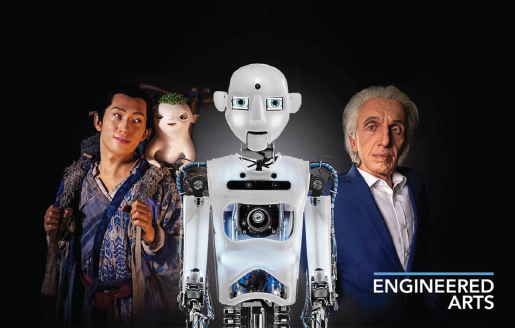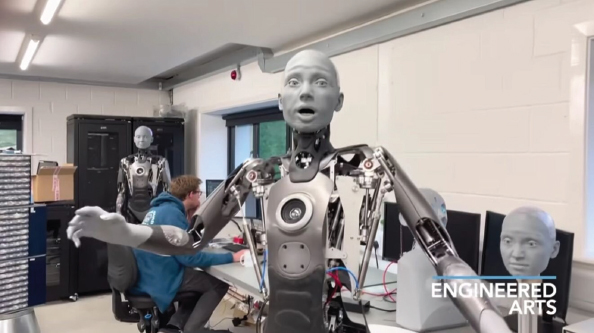Robots have entered almost every aspect of our lives. Today, robots have taken on many boring, dirty, or dangerous jobs. This is thanks to the fusion of robotics and other technologies. Electronic skins made of sensors and artificial intelligence powered by neural networks collide in the cloud, creating increasingly dexterous and intelligent robots.
What’s truly revolutionary is economics. The UR3 is a collaborative robot made by Danish manufacturer Universal Robots.1 The robot can work 24/7, never get tired, don’t need to eat, go to the toilet, or take vacations, and don’t complain.
What Are the Latest Developments in Soft Robots?
Soft robots are one of the top 10 technology trends for 2022, as proposed by Alibaba DAMO Academy after analyzing 7.7 million public papers and 85,000 patents over the past three years.
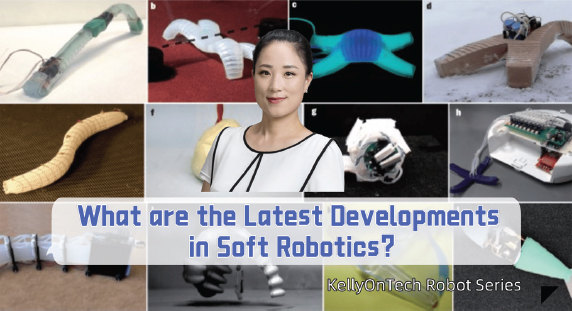
What are the latest developments in soft robotics?
In short, a soft robot is to make the robot as flexible as the human body. Soft robots combine flexible electronics, force perception and control, and artificial intelligence technologies to gain force perception, vision, sound, and other perceptual capabilities. The versatility of soft robots to deal with multitasking and their adaptability to environmental changes will be greatly improved.
Soft Robotics Market Outlook
According to Mordor Intelligence, the soft robotics market was valued at 1,049.05 million U.S. dollars in 2020 and is expected to reach 6,369.04 million U.S. dollars by 2026, growing at a compound annual growth rate (CAGR) of 35.17 percent during the forecast period (2019–2026).2 Although still in its early stage, soft robotics offer several advantages over traditional robots, and the penetration of soft robotics is expected to grow significantly over the forecast period. Furthermore, the global COVID-19 pandemic has intensified the demand for automation to mitigate labor challenges and develop operational and food safety in the factory environment , thereby boosting the growth of the market.
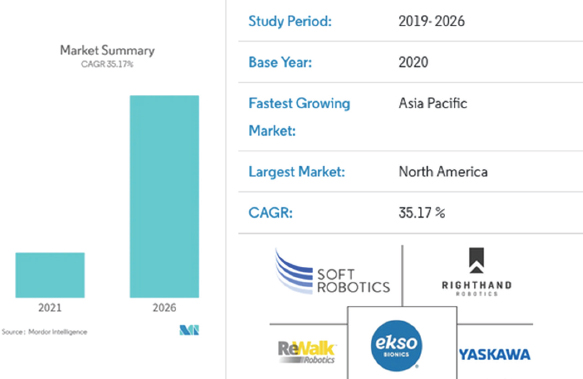
The soft robotics market outlook (2019–2026)
Source: Mordor Intelligence.
What Is the World’s First Fully Independent Soft Robot?
Octobot is the world’s first completely independent soft robot, small enough to fit in the palm of your hand, developed by Harvard University in 2016. It has no hard electronics—no batteries or computer chips—and can move without being tethered to a computer. It is driven by chemical reactions and is controlled by microfluidic logic that directs the flow of fuel.
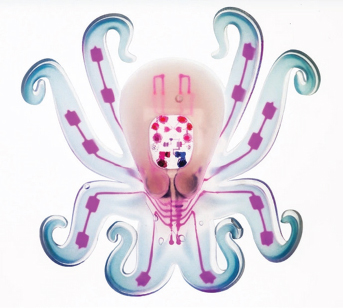
Octobot—the world’s first completely independent soft robot
Source: Harvard University.
Octobot is basically a pneumatic tube, how to make it move? Harvard researchers pumped a high concentration of hydrogen peroxide into the Octobot’s body. The pressure pushes the liquid through a tube in the body, eventually to a platinum wire, where a catalytic reaction occurs where the gas expands and travels through a tiny microfluidic controller. Alternate releases of gas caused the soft robot to swing its tentacles up and down, moving around in the process. So, 1 mm of fuel can move the Octobot for about 8 minutes.
How to Build Such a Soft Robot?
Harvard researchers tried more than 300 times to find the right formula. First, they placed the microfluidic chip into an empty, custom-made octopus mold. They then poured a silicone mixture into the mold to cover the chip. After the ink lines were then injected into the silicone using a 3D printer, they needed to be baked for four days to allow one of the inks to evaporate, leaving a hollow container through which pressurized gas could flow.
Although not equipped with sensors and programming capabilities (no better control over the robot’s movements), the invention of the Octobot means that soft robots are completely achievable.
How to Improve the Performance of Soft Robots?
Soft robots are still in their early stages. So how can performance be improved? Research teams around the world are currently focusing on improving the performance of soft robots through the application of artificial intelligence technologies and material selection.
MIT’s (Massachusetts Institute of Technology) Idea
MIT’s idea is to enhance the self-adaptive ability of flexible robots to their surrounding environment through artificial intelligence technology.3 We know that at least 80 percent of external information is obtained through human vision. The idea at MIT is that instead of letting the robot provide feedback through the visual system like a human, it is better to get control feedback through sensors, because it is easier and faster to do so.
MIT’s Computer Science and Artificial Laboratory (CSAIL) has used off-the-shelf materials to create a soft sensor system that covers a robot’s body to provide proprioception—the perception of its body movement and position. This feedback feeds into a novel deep learning model that filters noise and captures clear signals to estimate the robot’s 3D configuration. This allows the flexible robot to automatically position itself, control itself, pick up things, and interact with the world around it through these sensors.
The Rice University Approach
Another way to improve the performance of soft robots is to work on materials.
Do you remember the liquid robot that changed its shape in the Terminator movies? Is there any way we can change the shape of a soft robot now? The answer is yes. Let me introduce the currently more popular material—liquid crystal elastomer. Simply put, this material is characterized by its own elasticity, and good fluidity, which can be adjusted according to external changes.
Liquid crystal elastomer is actually not a new concept. As early as 1975, French physicist Pierre-Gilles de Gennes, who won the Nobel Prize in Physics in 1991, predicted it. It was first synthesized by German organic chemist Heino Finkelmann in 1981.
In 2021, researchers at Rice University used liquid crystal elastomers to change shape in response to temperature changes. It sounds simple, but it is actually a very complicated process. First, in order to ensure the initial shape, the ratio of solvent and catalyst needs to be strictly controlled. In the case of a larger shape, such as a cylinder, the ratio of the gel has to be taken into account, making it sufficient to support its own shape.
If this technology is mature, soft robots will be applied to more fields, and the future is promising.
Supplementary—Advances in Liquid Crystal Elastomer Research
Liquid crystal elastomer is a typical bi-directional shape memory material with technical advantages such as large deformation and reversible deformation, which has good application prospects in the fields of bionic devices and soft robotics. However, after four decades of development, the research on liquid crystal elastomers is still at the laboratory level, and has not achieved industrial application. The key scientific problem that limits its application is that the stress generated by liquid crystal elastomers during the deformation process is too small to meet the mechanical performance requirements of practical application scenarios.
Professor Hong Yang’s group in the School of Chemistry and Chemical Engineering at Southeast University has made important progress in the field of artificial muscle materials research. The research team has developed a polyurethane/polyacrylate interpenetrating network structured liquid crystal elastomer material with superb mechanical properties, which has a wide range of application prospects in the field of artificial muscle and other fields. The research results were published in the top international journal Journal of the American Chemical Society in 2019.
Prof. Hong Yang’s research team has taken an alternative route to prepare a polyurethane/polyacrylate interpenetrating network structured liquid crystal elastomer material by mixing the small molecule precursor components of polyurethane liquid crystal elastomer and polyacrylate liquid crystal thermal solids and then cross-linking them synchronously. The liquid crystal elastomer material, whose shrinkage strain, stress, and elastic modulus reach 46 percent, 2.53 MPa, and 10.4 MPa, respectively, fully meet the mechanical performance requirements of liquid crystal elastomer-based artificial muscles for the first time. (https://pubs.acs.org/doi/abs/10.1021/jacs.9b06757).
Use Case—Soft Robotics in Manufacturing
Here I introduce a start-up called Soft Robotics, founded in Boston in 2013.4 The company focuses on developing soft robotics for automated sorting in food processing and logistics distribution, and covers more than 40 patents and applications, including know-how in actuator geometry, material selection, and operating range. Soft Robotics develops soft robots that are highly adaptable while reducing system complexity and overall system cost. Fully automatic, it can pack a tote bag, pick fruit from a vine, or easily handle a 10-pound kettlebell.

Source: Soft Robotics.
In 2019, Soft Robotics launched mGrip, the company’s first on-demand modular automation system that allows users to quickly build, validate, and install production systems based on the company’s needs, greatly contributing to the popularity of soft robotics.
MGrip
Source: Soft Robotics.
The Founding Team of Soft Robotics
George Whitesides, Cofounder of Soft Robotics
George Whitesides has a distinguished career in both academia and business. He received his PhD from California Institute of Technology and then joined the chemistry department at Harvard University, where he served as chair. He later joined the MIT faculty.

George Whitesides, cofounder of Soft Robotics
Source: Volker Steger/Science Source.
George has held advisory positions at the National Science Foundation and the Defense High Council of the Department of Defense. George has received numerous awards, such as the DARPA Major Technical Achievement Award (1996), the Nanoscience Award (2008), and cofounded several companies.
Carmichael Roberts, Cofounder and Chairman of Soft Robotics
Carmichael is a PhD in Chemistry from Duke University, a serial entrepreneur, and venture capitalist. Back in 1999, he was named one of the world’s top 100 young entrepreneurs by MIT Technology Review.

Carmichael Roberts, cofounder of Soft Robotics
Source: ITIS Innovation.
Carmichael is also a founding partner of the Material Impact Fund, a Material entrepreneur and investor that incorporates a unique university technology licensing business model and commercializes it through targeted partnerships with Fortune 500 companies.
Soft Robotics recently raised another $10 million in Series B+ funding. The funding will be used to launch its SoftAI powered robotic solutions. Currently, Soft Robotics has run billions of successful picks, providing 24/7 production services to several global manufacturers in the food industry.
Use Case—Soft Robotics in the Medical Field
Medical soft robotics is a typical interdisciplinary field, involving biology, chemistry, material science, medicine, and other disciplines. Soft robots are currently used in applications such as rehabilitation, surgery, and diagnosis. Here I will focus on the application of soft robotics in lung cancer diagnosis.
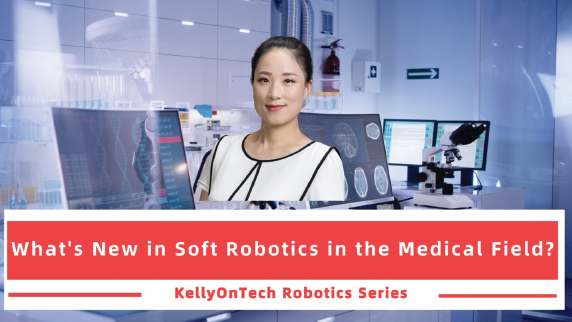
What’s new in soft robotics in the medical field?
Current Status of Lung Cancer and Difficulties in Treatment and Screening
We know that lung cancer is the malignant tumor with the highest morbidity and mortality in the world. According to statistics from the World Health Organization (WHO), 1.8 million people worldwide died from lung cancer in 2020, more than those from liver cancer and stomach cancer combined.
Lung cancer is so deadly because most cases are not diagnosed until a later stage. If diagnosed and treated early, the survival rate can increase to 55 percent.
Why Is It so Hard to Diagnose?
In early stage lung cancer, suspicious lung nodules are often very small, and as many as two-thirds are located deep in the periphery of the lung, making it difficult for doctors to diagnose them safely and reliably.
Bronchi, bronchial tree, and lungs
Source: Wikipedia.
What Are the Current Countermeasures?
Surgical removal of the suspected nodule is the most invasive option, poses the highest risk to the patient, and usually requires hospitalization. Transthoracic puncture biopsy (TTNA) is less invasive, but requires insertion of a needle from outside the body through the chest wall. This can lead to lung collapse (pneumothorax) in up to 42 percent of patients, 17 percent of whom require reinflation with a chest tube.
Traditional flexible bronchoscopy or transbronchial needle aspiration biopsy (TBNA) are the safest diagnostic procedures, but they are limited in scope and often fail to access the outer regions of the lung. Unfortunately, up to two-thirds of pulmonary nodules are located in the periphery of the lung and may not be accessible using standard bronchoscopy.
What Is the Use of Soft Robots for Lung Cancer Diagnosis?
Here I would like to introduce Auris Health, a soft robotics company, founded in 2007 and headquartered in Silicon Valley. The company is dedicated to transforming medical intervention by integrating robotics, micro-instruments, endoscope design, sensing and data science into one platform.
Auris Health’s MONARCH Platform
Auris Health’s MONARCH platform is the first soft-body robotic platform for diagnostic and therapeutic bronchoscopic procedures designed to give physicians unprecedented access to small, hard-to-reach peripheral lung nodules. The unique bronchoscope and sheath retractable design successfully accesses all 18 parts of the lung, averaging 4.2 cm more than conventional fine bronchoscopes.
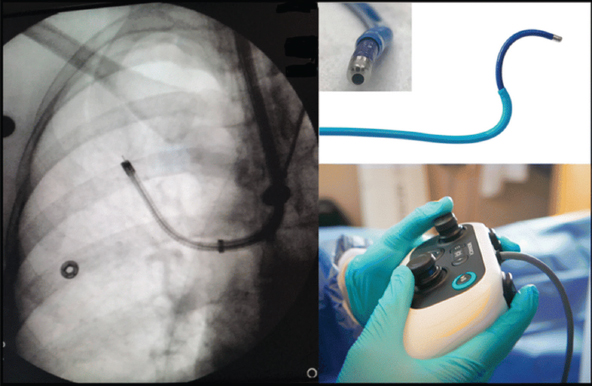
Auris Health’s MONARCH platform
Source: Auris Health.
Bronchoscope and sheath retractable design provides stability and control. Once beyond the sheath, the bronchoscope can provide an additional 180° of flexion. This advanced mobility is ideal for the small, tortuous anatomy of the lungs. Moreover, each component of the bronchoscope can be independently articulated, advanced, retracted, and position-locked, making it easier for the physician to better control and manipulate the scope and be able to find small nodules deep within the lung.
In addition, the tip of the bronchoscope has an integrated camera, flushing and suction device that allows the physician to directly view the biopsy area, thus aiding in accurate diagnosis and surgical success.
Dr. Frederic Moll, Founder of Auris Health and Pioneer in Surgical Robotics
Dr. Frederic Moll founded Auris Health in 2007. He is a physician and visionary entrepreneur who pioneered the field of surgical robotics.

Dr. Frederic Moll, founder of Auris Health
Source: Auris Health.
Dr. Moll is an MD from the University of Washington and an MBA from Stanford University. He was the medical director of Guidant’s surgical department until 1995, and has been working on ways to minimize the invasiveness (incisions and injuries) of patients’ bodies during medical diagnoses. He believed that robots could help make routine surgery less invasive, and so he cofounded Intuitive Surgical in 1995, which is now valued at approximately $61.4 billion.
Since then, Intuitive Surgical has been developing minimally invasive robotic-assisted tools and platforms, including the FDA-approved da Vinci system for robotic-assisted surgery, and the Cyber Knife, a precision radiation robot used to treat tumors.
In 2019, Dr. Moll sold Auris Health to Ethicon, a division of Johnson & Johnson Medical Devices, for $3.4 billion.
In the future, I hope to see more entrepreneurs with medical backgrounds, who understand the real pain points of the application field, and who have a deep and long-term focus on empowering the medical field with soft robotics.
Video version (www.youtube.com/watch?v=V4vRT_MUVfc).
A Special Type of Robots—Origami Robots
What Is an Origami Robot?
The robot you saw in the following picture is called an origami robot, a research project of Harvard University in the United States in 2014. After being powered on, the origami robot can change from a flat state to a standing robot. It can walk and turn without human assistance. It was first used to enter the collapsed buildings in disaster areas to perform search and rescue tasks.
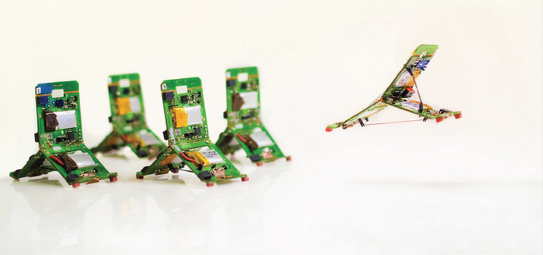
Origami robots
Source: Jamie Paik/EPFL Switzerland.
Jamie Paik—The Professor and Director of the Reconfigurable Robot Laboratory at École Polytechnique Fédérale De Lausanne
Speaking of origami robots, I would like to introduce a female scientist, Jamie Paik. She is the Professor and Director of the Reconfigurable Robot Laboratory at École Polytechnique Fédérale De Lausanne.5 Prof. Paik was born in Canada. She joined Harvard University as a postdoctoral researcher and worked with famous scientists such as Daniela L. Rus, who is currently the Director of the MIT Computer Science and Artificial Intelligence Laboratory.6
Prof. Paik and her team have taken inspiration from the ancient art of origami to create reconfigurable robots with unique properties. Origami robots are flat, lightweight, and have a large number of degrees of freedom, making them highly adaptable for a variety of applications. By exploiting the characteristics of origami and novel fabrication techniques and actuation methods, they create a range of origami robots, including mobile robots, modular robots, and adjustable stiffness structures.
Can Origami Be Applied to Robot Design?
Imagine a robot module that uses polygonal shapes to construct many different forms to create many robots for different tasks. In addition, Prof. Paik uses smart paper, which can be automatically folded into any form required according to environmental requirements.

Origami robots
The origami robot can choose the best way to pass different surface materials by either moving step by step, jumping over, or flying over the surface. Each module has a weight of 10 g and can be combined according to different tasks. The manufacturing process of individual modules is the same, which is very convenient for mass production. Even if one of them is broken, it is very easy to replace a new module at any time.
Robogami design attributes its powerful geometric reconfigurability to two major scientific breakthroughs. One is its layer-by-layer 2D manufacturing process: multiple functional layers of basic robotic components (e.g., microcontrollers, sensors, actuators, circuits, and even batteries) are stacked on top of each other. The other is to convert the design of typical mechanical linkages into various folding joints (i.e., fixed joints, pin joints, flat, and spherical links).
This means that when designing a robot, we can not only reduce the size of joint parts, but also reduce the number of parts. By flattening them, it is possible to miniaturize a system containing many components, which require complex assembly and calibration. They can be stacked and still maintain their accuracy.
What Are the Practical Applications of Origami Robot Technology?
The Mercedes-Benz’s Cool Vision AVTR Concept Car
Do you remember Mercedes-Benz’s cool Vision AVTR concept car? It debuted at the Consumer Electronics Show (CES) in Las Vegas in January 2020. The bionic flaps embedded in the rear of the vehicle are very impressive. A total of 33 bionic flaps mimic the scales of reptiles. These scales can convey information about the CAR’S surrounding environment to the driver through subtle flowing gestures.

The Mercedes-Benz’s cool Vision AVTR concept car
Source: Mercedes-Benz.
These 33 released skin flaps are actually 33 miniature robots. It uses a patented origami design to realize a lightweight, high-precision foldable robot.
This is called Foldaway Pixels. It is an origami robot with transparent tiles. It cannot only change the color, but also can flatten, move up and down, and move 360°. The robot is embedded in the joystick and can interact with the driver’s fingers. The origami robot can very easily change the size and shape according to the customer’s personal requirements.
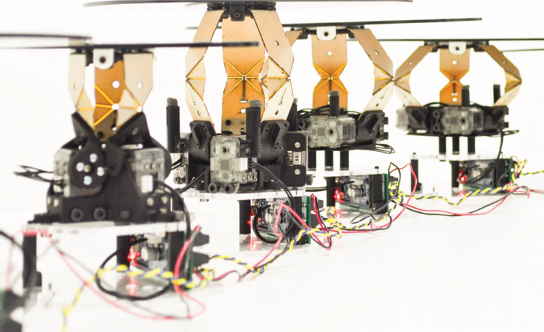
EPFL Switzerland, Foldaway Pixels
Source: Mercedes-Benz.
A New Generation of Billboards
Another application of the origami robots is a new generation of billboards.
If you want to convey your company’s high-tech sense at an exhibition, you might as well make use of an origami robot billboard.
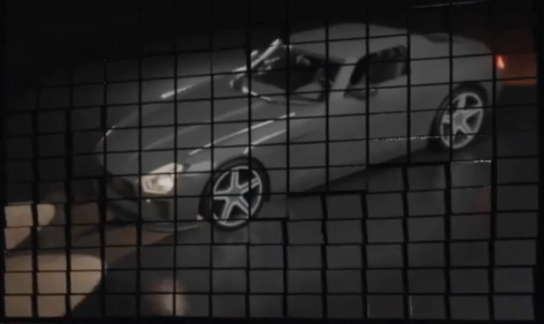
The folding robot billboard
Source: Foldaway Haptics.
The folding robot billboard is composed of multiple pixels. It can provide animation effects for company logos, and even complex videos or products. Each pixel can independently display multiple colors and different movements, which would be eye-catching. And you can adjust the size and shape according to your individual needs.
Video version (www.youtube.com/watch?v=U_XQ9resICA).
What’s New in Humanoid Robots?
To understand mankind’s vision for the future, it can be seen from science fiction movies. Do you remember the 2012 sci-fi comedy movie Robot and Frank. The film tells the story of an elderly Frank, who was quite resistant to the household humanoid robot his son bought for him, but later became inseparable with it and trained the robot.
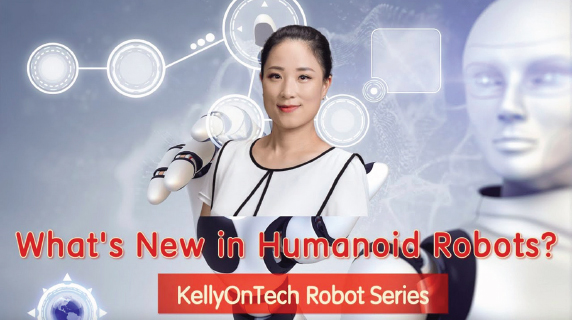
What’s new in humanoid robots?
How to Define a Humanoid Robot?
A humanoid robot is a robot that is shaped like a human body. Some humanoid robots actually replicate only part of a human body, for example, from the waist up. Some humanoid robots have heads that replicate human facial features, such as eyes and mouth. Humanoid robots are mainly used in education and entertainment, research and space exploration, personal assistance and caregiving, search and rescue, and public relations.
Humanoid robots
Source: Image hand-drawn by Sam Luo.
When Did the First Humanoid Robots Appear?
The earliest records of humanoid robots can be traced back to the third century BC, during the Spring and Autumn Period and Warring States Period in China. The concept of humanoid robot was introduced in detail in Liezi·Tangwen.

The concept of humanoid robot was introduced in detail in Liezi·Tangwen
Source: Image hand-drawn by Sam Luo.
The text mentions a skilled craftsman named Yan Shi, who presented King Mu of Zhou with a life-like automaton doll. The doll not only sang and danced well, but also made secret glances at King Mu’s concubine during the performance, causing King Mu to become furious and think it was a real person. Master Yan quickly cut open the doll, which was made of leather, wood, and so on. Only then did the king turn his anger into joy and praise Master Yan’s skill.
Why Has the Development of Humanoid Robots Been Slow?
High initial costs and research and development (R&D) expenses inhibit the growth of the humanoid robot market. The key issue is the adaptive control technology in dynamic environments and how to improve the control algorithms that automatically adjust in unknown environments.
At present, more than 90 percent of robot R&D companies are still in a state of prerevenue, and further development is needed for the industry to mature.
Are There any Humanoid Robotics Companies That Have Been Profitable for a Long Time?
When it comes to robotics companies, our general impression is that such companies are either headquartered in major first-tier cities or employ hundreds of thousands of R&D team members. The humanoid robot company introduced today, which has achieved profitability early on, is different.
Engineered Arts—One of the World’s Most Surreal Robot Makers
The company was founded in 2005 in Falmouth, a small town in southwestern England, with only 29 employees. But this unassuming company, with clients such as Amazon Prime Video, TEDX, National Geographic, and many other world-renowned organizations, is known as one of the world’s most advanced designers and manufacturers of humanoid entertainment robots.
It all started back in 2005, when the company received a business to design and build a mechanical actor for the Eden Project’s mechanical theater. The requirement was not just to create a set of temporary characters, but to develop a programmable character that could be reused for various purposes. Thus Engineered Arts’ first generation of humanoid robots, RoboThespian Mark 1, was born and became a sensation.
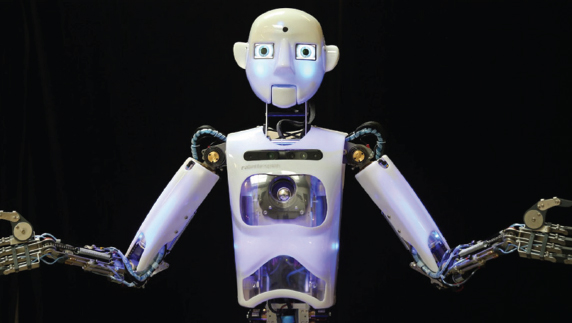
Robo Thespian Mark 1
Source: Engineered Arts.
Mesmer Humanoid Robot Engineering Art System
Engineered Arts has developed a humanoid robotics engineering art system called Mesmer for building powerful and cost-effective very realistic humanoid robots. This includes Jing Boran’s humanoid robot and Uba in the movie The Legend of the Demon Cat.
It is worth mentioning that all the components needed to build a humanoid robot, including:
• Hardware—motors, electronics and connectors
• Sensors—cameras, depth sensors, LiDAR, microphones
• Firmware—motor control for speed, position, and torque
• Software—for controlling animations, interactions, audio, and lighting
They are all designed from the ground up by Engineered Arts, and the components can work together without all the problems of working together that other robotics companies have with components from different suppliers.
Robot Series
Source: Engineered Arts.
The advantage of the Mesmer system is that the entire design process does not require the intervention of IT or programmers. Artists and creative staff can freely design various functions and images of humanoid robots through the virtual robot software and accurate 3D models provided by Engineered Arts. Imagination becomes the only limit.
In addition, you can remotely control the robots and interact with humans in real time. Engineered Arts designs humanoid robot hair using real human hair, and various robot images are made into headgear, or the entire head can be removed for easy replacement.
Ameca—Engineered Arts’ Latest Line of Humanoid Robots
Engineered Arts’ latest robot—Ameca series incorporates the company’s 20 years of innovation with breakthrough advancements in motion and natural gestures, intelligent interactions, and future-proof software systems designed to combine artificial intelligence and computer vision with adaptive learning to provide users with an unprecedented path to experience API customization. Engineered Arts’ Ameca humanoid robot was in the spotlight at CES 2022 in Las Vegas.
Although Ameca has not yet been developed to walk and move, it is quite capable of making gestures with its arms and hands, and most importantly, it can express a wealth of human emotions using the 17 motors on its face.
Ameca humanoid robot
Source: Engineered Arts.
Ameca has also been specially designed with a gray-blue skin tone to downplay racial characteristics. According to its developers, Ameca is the most advanced humanoid robot available. In addition, different parts of Ameca can operate independently of each other, and its software and hardware can be interchanged in a modular way.
Designing humanoid robots is a human obsession to become the master of all things. As technology continues to advance, technology combined with human creativity holds greater imagination for the future. Let’s take a look at Ameca’s performance at CES 2022.
Video version (www.youtube.com/watch?v=rWI0EPPA_AU).
Robotics in China
Before 2015, almost all parts and components in China’s robotics field were imported, resulting in higher cost of the robots produced than abroad. However, in the past three years, domestic components have achieved a breakthrough. “The four core components of the robot: servo, motion control, harmonic deceleration, and RV deceleration have all been localized.” Yang Lei, managing director of Northern Lights Venture Capital. China’s next-generation robots will use the established supply chain to do things differently than Germany and Japan.
Which Humanoid Robot Company Is Worth Watching in China?
UBTECH is a leading global artificial intelligence and humanoid robotics company founded in 2012.7 Born in 2008 with the first industry-leading breakthrough in digital servo systems (the core components that enable humanoid robots to move), UBTECH’s global research, design, development, manufacturing, sales, and marketing capabilities have resulted in a complete portfolio of world-class robots.
UBTECH has two business lines, B2B and B2C. The B2B-side products are mainly used in stage performance, education, business, and security fields. The B2C-side products include Alpha series of consumer-grade humanoid service robots, Jimu, an intelligent programming robot for STEM education, and IP robots in cooperation with Disney. In 2019, UBTECH’s B2B-end business revenue accounted for 35 to 40 percent of total revenue.
UBTECH has cooperated with the research teams of the world’s top universities such as Carnegie Mellon University and Tsinghua University to jointly explore the frontier topics of large-scale humanoid service robots. In June 2021, RoboCup International Federation and UBTECH announced a strategic partnership to jointly promote high-quality AI and robotics research and education worldwide.8
UBTECH’s Latest Generation Humanoid Robot—Walker X
UBTECH launched a new generation of large-scale humanoid service robot Walker X at the 2021 World Artificial Intelligence Conference (WAIC2021), the world’s top event in the field of artificial intelligence held in Shanghai.9
Walker X can recognize faces, gestures, objects, and other information in complex environments, and accurately understand and perceive the external environment. Moreover, the new-generation Walker X is 10 cm lower in height and 14 kg lighter in weight than its predecessor. In terms of human–robot interaction, Walker X has a built-in native 28+ robot emotion system, and the active interaction greatly optimizes the user’s experience.
UBTECH is also facing some challenges. On the one hand, humanoid robots are expensive, and it is difficult to land commercial scenarios. Its main profit model relies on artificial intelligence education and some vertical B2B-side industries, and thus, it is challenging to achieve large-scale profits in a short period of time.

Walker-X Robot
Source: UBTECH.
On the other hand, in order to further enhance R&D capabilities, UBTECH needs to expand its team, which requires financial support. At present, the R&D team accounts for more than half of the total, with a team size of more than 1,000 people. The core R&D team includes four levels of scientific research, algorithm, engineering, and application, and the number of patent layouts exceeds 2,600.

